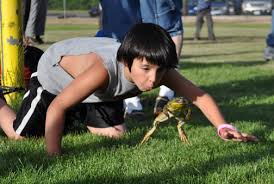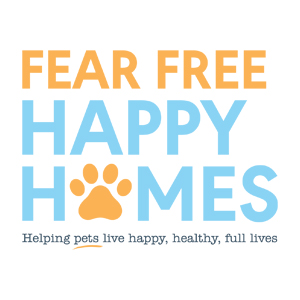Wacky Animal Laws
David Rosengard, ALDF
 David Rosengard, a Staff Attorney for the Animal Legal Defense Fund (ALDF), explores the 10 Weirdest Animal Laws on the Books. He'll also share some of the important work the ALDF does for animals worldwide by being a voice for the voiceless.
David Rosengard, a Staff Attorney for the Animal Legal Defense Fund (ALDF), explores the 10 Weirdest Animal Laws on the Books. He'll also share some of the important work the ALDF does for animals worldwide by being a voice for the voiceless.
Every state has laws about animals. Some of those laws protect animals, others do the exact opposite and then some are just strange. The ALDF, the nation's preeminent legal advocacy organization for animals, has come across a lot of odd laws over the years as the organization reviews legislation and opportunities to expand legal protections for animals. Attorneys review local, state and federal statutes, ordinances and regulations and have compiled 10 of the weirdest animal laws around the country. From jumping frog competitions to llama encounters and dog grooming prohibitions, these laws are bound to confuse even the most law-abiding citizen. David Rosengard, Staff Attorney for the Animal Legal Defense Fund, explains some of those laws.
Have you ever had a bad hair day? Well, if your dog's having a bad hair day and you live in Juneau, Alaska, you're not going be able to get it help in any kind of human establishment. This probably dates back to before Juneau had any infrastructure for dog grooming. This law may be because someone trying to sneak their dog into a human beauty salon.
 There are a great many of other weird animal laws still on the books and part of it has to do with the way that animal law has grown up over time. It comes out of all kinds of different relationships that we have with animals. One law, for example, states in California you can have jumping frogs and you can have frogs that you might eat, but they can't be the same. So if you have a frog compete in a jumping competition it is ineligible for use in any sort of frog related dish. It's interesting because it's the same frog and it points to the way that under the law animals get treated differently not based on who they are but based on how people relate to them, which is part of why they are included in the list of weird and wacky laws. So if your frog loses the race you can't eat it, it would be off the menu.
There are a great many of other weird animal laws still on the books and part of it has to do with the way that animal law has grown up over time. It comes out of all kinds of different relationships that we have with animals. One law, for example, states in California you can have jumping frogs and you can have frogs that you might eat, but they can't be the same. So if you have a frog compete in a jumping competition it is ineligible for use in any sort of frog related dish. It's interesting because it's the same frog and it points to the way that under the law animals get treated differently not based on who they are but based on how people relate to them, which is part of why they are included in the list of weird and wacky laws. So if your frog loses the race you can't eat it, it would be off the menu.
Where did ALDF find these laws? Are they just obscure laws on the books that they had to go searching for? Yes. In the course of the ALDF's legal work, which in the ALDF's criminal justice program, they try to ensure that animals victimized by crime get justice. They work with a lot of different state laws and a lot of different county ordinances. So as they're doing some other research and they see a strange law, they will keep track of it.
 One wacky law is that you are not allowed to own ferrets in California. So why do some states allow them and other states don't? California is one of the only two states that don't allow ferrets. The other one is Hawaii. The legal reason in California is because as far as California law is concerned, ferrets are exotic wild animals. The more practical reason seems to have to do with concerns about invasive species and the impact on agriculture. This is where Hawaii and California have sort of different scenarios. Hawaii, being an island and having a lot of history with invasive species, has very clear concerns about what would happen if tiny weasels got loose in their state. California already has a variety of weasel creatures in the state. So it's harder to really see what's the practical concern with ferrets is, particularly because domestic ferrets are not known for their self-preservation skills and don't seem to do well in the wild.
One wacky law is that you are not allowed to own ferrets in California. So why do some states allow them and other states don't? California is one of the only two states that don't allow ferrets. The other one is Hawaii. The legal reason in California is because as far as California law is concerned, ferrets are exotic wild animals. The more practical reason seems to have to do with concerns about invasive species and the impact on agriculture. This is where Hawaii and California have sort of different scenarios. Hawaii, being an island and having a lot of history with invasive species, has very clear concerns about what would happen if tiny weasels got loose in their state. California already has a variety of weasel creatures in the state. So it's harder to really see what's the practical concern with ferrets is, particularly because domestic ferrets are not known for their self-preservation skills and don't seem to do well in the wild.
Denver, Colorado is a place you can just drive down the street and purchase pot, but if you have a pit bull it's illegal. Denver is one of the places with breed bands, so where does the ALDF stand on that?
The ALDF is opposed to breed bans for a variety of reasons. Fundamentally they believe they don't work. The things they're meant to address are preventing harmful interactions between humans and dogs. And they just don't serve that purpose. The data indicates that it's not really the breed of an animal. It speaks to its likelihood, for example, to bite someone in how it's socialized, how it's trained and the environment it's kept in. That's really true regardless of what the breed of dog is. Also, the impact of those laws is that it makes it more likely that banned dogs, or dogs that looked like a banned breed, will end up abandoned abused or in shelters to create sort of a doggy criminal underclass, which serves no one well.
 One such law that is a favorite of David's is a law out of Washington State that originally made it a felony crime to shoot Bigfoot. It's been since downgraded to a misdemeanor. But this is fascinating because Big Foot, depending upon where you fall on your belief spectrum, is either an urban myth or perhaps an undiscovered crypto zoological creature. But regardless, there hasn't been historically a big problem with Big Foot getting shot. What this law speaks to, for David, is a recognition that eco tourism and people seeing and experiencing wildlife is powerful. And if someone shoots Bigfoot once, that person gets the benefit and the experience of encountering Big Foot, but denies it to everyone else. If Bigfoot is out there, and you can see Bigfoot in Washington state, that benefits a lot of people. It generates tourism dollars, it generates interest and it's better for Bigfoot. The other portion of this is an acknowledgment that this creature, that is in urban mythology meant to be the '"missing link' between humans and the rest of the world, is a sentient creature just like all animals are and deserves not to be subject to cruelty and wanton death.
One such law that is a favorite of David's is a law out of Washington State that originally made it a felony crime to shoot Bigfoot. It's been since downgraded to a misdemeanor. But this is fascinating because Big Foot, depending upon where you fall on your belief spectrum, is either an urban myth or perhaps an undiscovered crypto zoological creature. But regardless, there hasn't been historically a big problem with Big Foot getting shot. What this law speaks to, for David, is a recognition that eco tourism and people seeing and experiencing wildlife is powerful. And if someone shoots Bigfoot once, that person gets the benefit and the experience of encountering Big Foot, but denies it to everyone else. If Bigfoot is out there, and you can see Bigfoot in Washington state, that benefits a lot of people. It generates tourism dollars, it generates interest and it's better for Bigfoot. The other portion of this is an acknowledgment that this creature, that is in urban mythology meant to be the '"missing link' between humans and the rest of the world, is a sentient creature just like all animals are and deserves not to be subject to cruelty and wanton death.
Anther law is in Ohio where you are not allowed to permit your horses to have '"special horsey time'" on the streets. But notably that only applies to male horses. Since ALDF put this out, David's been told by people with more horse knowledge than him, that it's often the mare that initiates this. He imagines this law is to prevent awkward scenes from playing out on the streets of Ohio. But it looks like they may be targeting the wrong horses in this scenario.
Lastly, there is a law in Georgia giving the llama extra protection. A lot of states have what are called equine activities statutes, which essentially say if you're on horseback or attending a show with horses, there's a certain amount of risk that you must assume. Georgia extends that to llamas, which is interesting because those statutes historically grew up in a time where people were interacting with horses in their daily lives. Everyone knew there were certain risks to being around horses. David doesn't remember a moment in American history where people knew the same risks apply to llamas. But in Georgia, you better be up on your llama knowledge.
The Animal Legal Defense Fund is a nonprofit organization of attorneys and has been around since 1979. Their mission is to advance the interest and improve the lives of animals through the legal system. They do that in a variety of different ways. In their criminal justice program, they work on making sure that animal crimes are taken seriously and that law enforcement prosecutors have the tools they need to get justice in those cases. Their legislative program works for stronger, better animal laws. Their litigation program does similar things on the civil side. They also have a program devoted to educating people about animal law. They're operating broadly throughout the United States trying to help animals get a better shake out of the justice system
The ALDF consists of a core group of full time staff attorneys, who every day fight for animals through the legal system. They also have a very large pro-bono network of attorneys, who may have entirely unrelated practices but they do volunteer work for the ALDF on the behalf of animals.
If you want to learn more about the animal legal defense fund and other wacky animal laws, visit ALDF.
Why Use Supplements?
Dr. Elizabeth DeLomba, VetriScience
 Dr. Elizabeth DeLomba is the consulting veterinarian for VetriScience, which make an assortment of supplements for our pets.
Dr. Elizabeth DeLomba is the consulting veterinarian for VetriScience, which make an assortment of supplements for our pets.
So why should we even use supplements?
Dr. Lombardo explains that what they have found at VetriScience is that people are really looking for something in addition to traditional veterinary medicine. Supplements support different body systems to make sure that the body is functioning at its peak capacity. So as pets start to age, they may need a little bit more support for their joints. If they get a little bit anxious, they may need something to try to decrease their levels of anxiety and basically just make their lives a little bit easier.
There are many supplements on the market. So how do you know which ones are good?
Dr. Lombardo tells us that its key to find a supplement that's a quality supplement. The first thing that she suggests is that you talk to your veterinarian. Your veterinarian will know your pet the best and what they may respond to. However, there are a lot of supplements available over the counter. One of the things that she looks for is whether or not the product has an NASC (National Animal Supplement Council label). What that means is that they actually go into the factories where these products are produced. They do independent testing and they make sure that they are actually giving you what it says on the label. So that's one quick way to make sure that what you're paying for is actually what you're getting.
 So what types of supplements are available for our animals?
So what types of supplements are available for our animals?
There's a wide range of supplements. The most common supplements that are sold in the United States right now are the joint supplements. However, dermatologic supplements and skin and coat health supplements, are increasing rapidly as well as behavioral supplements.
There are many animals that have behavioral issues as well as noise phobias and separation anxiety and VetriScience has a wonderful supplement for these issues. They've had really good success with their product, Composure. Behavioral issues in the United States with dogs are a huge issue. There are over five million dogs every year that are euthanized because of behavior problems. Fear and anxiety also affects about 23 million dogs in the United States. The Composure product has been on the market for a long period of time and they have actual clinical studies that show that their product starts to work within about 30 minutes and lasts about four hours. It's also very, very safe. So if you have a dog that seems a little bit stressed, or if there are thunderstorms coming or fireworks or even just maybe having a relative visit that might just increase their anxiety level a little bit, Composure supplements will calm them down and make their lives easier.
Learn More about Composure at VetriScience.
BRILLIANT PAD GIVEAWAY
 The last couple of weeks we've been giving out BrilliantPad automatic self-cleaning potty systems for your dog. We gave out a dozen of them and I think it's about time we go check in and see how the winners are doing.
The last couple of weeks we've been giving out BrilliantPad automatic self-cleaning potty systems for your dog. We gave out a dozen of them and I think it's about time we go check in and see how the winners are doing.
We check in with Nancy Ibarra and her two rescue Shih Tzu dogs, Stanley who is 10 years old and Oliver who is 6 years old. She received her two packages, one contained the BrilliantPad unit and the other contained the replacement rolls.
Nancy tells us it was pretty easy to put together and only took her five minutes. She said if she had actually read the instructions and watched the video, it might have taken her less time. She put it together correctly, but missed out on a couple of hints inside the video. One hint was to place the cord under the unit in the 3 latches to keep the cord in place.
Stanley and Oliver were a little confused at first and then Nancy placed some treats near it and they actually got on it. Nancy is slowly introducing them to it. But they both got on it and sniffed around and that's a good sign.
Her goal is to get them pad trained and then get them on to that brilliant pad and see if they like it.
 This would be helpful to Nancy, especially for long days she's at work or when she has to keep them locked in for certain reasons, like days when the gardener shows up. In addition, Nancy has coyotes in her area. Her dogs are so little she's just afraid to have them have outside when she's at work. She also has to wake up in the middle of the night to take one of her dogs out.
This would be helpful to Nancy, especially for long days she's at work or when she has to keep them locked in for certain reasons, like days when the gardener shows up. In addition, Nancy has coyotes in her area. Her dogs are so little she's just afraid to have them have outside when she's at work. She also has to wake up in the middle of the night to take one of her dogs out.
We also check in with Kim Huff and her dog Blanche Dubois, a rescued eleven-year-old Jack Russell, Fox Terrier mix. Blanche was named after Tennessee Williams Street Car Named Desire.
When Kim received her packages, she said they were confusing too look at. However, once she watched the video, it made perfect sense to her.
Blanche watched Kim set up the BrilliantPad and was very curious and sniffed it. When it was all set up, she sat on it, which was a good start.
Blanche currently uses a very primitive little box that Kim set up on the balcony. She actually uses sod that she has to lug home from the nursery. Kim's goal is to get Blanche trained, hopefully within the next couple of weeks, which will make her life a lot easier!
Visit Website
Pheromones In Puppy Training -Dr. Debbie
 So you just got a new puppy and you have all your training tools at the ready, the collar, leash and dog crate. But beyond that, do you have the one thing that can make your training tasks easier all around? Tap into your puppy's own sense of smell using canine pheromones, and ease your new pup's training and transition into the home.
So you just got a new puppy and you have all your training tools at the ready, the collar, leash and dog crate. But beyond that, do you have the one thing that can make your training tasks easier all around? Tap into your puppy's own sense of smell using canine pheromones, and ease your new pup's training and transition into the home.
Pheromones are scent signals emitted by all animal species, including humans. Various pheromones work under the radar to influence the perceptions and behaviors of others within a species.
Shortly after whelping, a pheromone is emitted from the bitch's sebaceous (oil) glands located between the mammary glands. The pheromone, dubbed the canine appeasing pheromone, reassures the puppies, calms them and facilitates nursing. The bitch stops emitting this pheromone as the pups mature, but all dogs retain the ability to "read" this pheromone. Not only do older dogs recognize this pheromone, but it continues to have a natural calming effect on canines of all ages.
In veterinary behavior cases, the dog appeasing pheromone is used for dogs with noise phobias, car travel anxiety, separation anxiety, and other fearful situations. Various forms are available including pheromone collars, plug in diffusers and sprays. The canine appeasing pheromone doesn't sedate the dog; rather it decreases fear and excitability.
The dog appeasing pheromone is also helpful for newly adopted puppies. Those first few days to weeks in a new home are full of changes for the pup faced with novel environments far from the comfort of mother and siblings. The dog appeasing pheromone has been shown to ease the transition of the pup into new home and improve sociability and training during a pup's critical socialization period.
Pheromone Research
For skeptics that need to see the proof in the studies, veterinary behavior studies have examined the positive influence of the dog appeasing pheromone. When comparing treatment responses for dogs with separation anxiety, the use of the dog appeasing pheromone equaled the benefit of the anti-anxiety medication, amitriptyline.
One study looked at 66 puppies as they settled into new homes after adoption. Approximately half of the puppies wore a pheromone collar and half wore a placebo. The study found that puppies wearing a pheromone collar displayed significantly fewer nuisance behaviors like vocalizations or scratching within 3 days of adoption. Pups wearing the pheromone collar woke their owner's less during the night and displayed fewer signs of distress and vocalizations throughout the course of the study.
The researchers concluded that pheromone collars helped both the pup and family. Pups were less stressed and adapted easier. By decreasing the pup's stress and fearful behaviors, the pet owners found a more enjoyable bonding experience with the new pup and faced less frustration through the training process.
In another study, puppies 8 to 15 weeks were enrolled in an eight-week long puppy socialization and training class. Half wore a pheromone collar and the other half wore a placebo collar. The pups wearing the collar were calmer in the face of novel experiences and displayed less fear, anxiety, and aggression. In the end, the pups with pheromone collar not only were less nervous, but had fewer behavioral problems and learned better. And a long-term effect on sociability was recognized in dogs up to one year after the class and study was completed.
Pheromones and My Pup
 As the new owner of a nine-week old Bouvier puppy named Nikki, I used both the pheromone collar and diffuser upon welcoming my new pup home. One day before bringing Nikki home, I placed a pheromone diffuser close to the puppy crate, where it would have maximum benefit during her first nights in the kennel away from mother and siblings. Immediately upon leaving the breeder's home, Nikki was fitted with a pheromone collar to serve as a source of reassuring pheromones that went everywhere she did. The pheromone collar has become a tool in Nikki's socialization. It's on her when she meets new people or animals, when she explores new environments, and during puppy kindergarten class.
As the new owner of a nine-week old Bouvier puppy named Nikki, I used both the pheromone collar and diffuser upon welcoming my new pup home. One day before bringing Nikki home, I placed a pheromone diffuser close to the puppy crate, where it would have maximum benefit during her first nights in the kennel away from mother and siblings. Immediately upon leaving the breeder's home, Nikki was fitted with a pheromone collar to serve as a source of reassuring pheromones that went everywhere she did. The pheromone collar has become a tool in Nikki's socialization. It's on her when she meets new people or animals, when she explores new environments, and during puppy kindergarten class.
Did pheromones help in my pup's transition and training? The four hour drive home from the breeders was a dream, no crying or whining the entire trip. Now three weeks later from acquiring my pup, and Nikki never soiled in her kennel during the day or night. I'll admit I had my share of interrupted sleep in the first two weeks, but most of Nikki's night time wakes were for genuine elimination needs. Overall her transition into the home was smooth and lacked the wailing, inconsolable cries of a stressed pup.
The canine appeasing pheromone isn't a magic bullet though. Nothing matches a quality pup obtained from a reputable breeder who focuses on health, genetics, and early socialization. Likewise pheromones do not replace the hard work and consistent training efforts that any new pet owner must provide. However, by adding the the canine appeasing pheromone to your new puppy training, you can help your pup become the best he or she possibly can.
Featured veterinarian known as "Dr. Debbie" on national pet radio program, Animal Radio. Ebook author of "Yorkshire Terriers: How to Be Your Dog's Best Friend"; "Pugs: How to Be Your Dog's Best Friend"; "Mini Schnauzers: How to Be Your Dog's Best Friend"; and "Shih Tzu: How to Be Your Dog's Best Friend."
Visit Website
Animal Radio News - Lori Brooks
 Grain-Free Pet Food Is A Marketing Trend
Grain-Free Pet Food Is A Marketing Trend
How many hours of research have you put into finding out what kind of food would be best to feed your pet? A lot of pet food now is inspired by meals eaten by your pet's wild ancestors. These include grain-free, all-meat and raw-food diets. But are these diets really better for our pets? Veterinarians and pet nutrition researchers say they're probably not. According to clinical veterinary nutritionists at Tufts University, grain-free foods were one of the fastest-growing sectors of the pet food market in 2016, but they warn it's simply a marketing trend and a lot of foods market themselves by what is NOT in it, such as grain free. Researchers say most people who buy pet food think that if they pay a lot for it and there are a lot of exclusions on the bag, that the food is healthier. But they warn we are buying an idea, not necessarily a better product, because there is no data to support the idea that grain-free diets are better for pets. Experts explain that pet parents have a false impression that grains are more likely to cause an allergic reaction, but they say it's actually much more common for dogs to have allergies to meat than to grain and that chicken, beef, eggs, dairy and wheat are the most common allergies in dogs. They caution against feeding pets raw meat, saying it's not uncommon to find things like salmonella, E. coli and listeria in raw meat. Unlike when an animal is hunting in the wild, there are many opportunities for bacteria to contaminate raw meat between the time an animal is slaughtered and when it reaches our pet's food bowl.
 Man Dies When Rescuing Cat After Hurricane
Man Dies When Rescuing Cat After Hurricane
The stories of heroes keep coming out of Texas and Louisiana after Hurricane Harvey. One mother has shared the story of her 25-year-old son who was electrocuted in Houston floodwaters. Andrew Pasek died while trying to save his older sister's cat. He was an animal lover who had just started out in chest deep water to walk the five blocks to his sister's house to check on the cat who had been left behind, when he stepped on a live electrical wire. Sadly, Andrew had pins and rods in his ankle after he broke it, which made him a magnet for the electric current flowing through the water. His mother said there was no way to stop him as he was constantly rescuing animals.
How Much Would You Spend To Save Your Pet?
More and more pet parents these days are willing to go the financial distance for their pets to give them the best. Americans dog owners spend $2,033 toward their pets on average each year and cat owners about half that at $1,042. But when pet owners are forced to choose between big vet bills and the life of their furry friends, dog owners are willing to pay around $7,000 more than cat owners according to a new survey by LendEDU. So what's the actual number? Those who have dogs say they're willing to spend up to $10,725 to save their pets, while cat owners say they're willing to spend up to $3,454. But for those people who had both cats and dogs, they'd be willing to spend up to $10,200 on average for either their cats or dogs.
 Spare Fido the Advil
Spare Fido the Advil
Ibuprofen is the #1 medication about which the Animal Poison Control Center receives calls. Never, ever, give a dog ibuprofen without first consulting a veterinarian. The reason is contained in a report issued by the American Society for the Prevention of Cruelty to Animals, which runs the Animal Poison Control Center. The annual report breaks down the most common pet toxins across the nation. Popular brands of ibuprofen include Advil, Motrin and Midol. Pets metabolize ibuprofen differently than humans and even small amounts of the human pain reliever can be dangerous to animals. Giving your dog ibuprofen can cause vomiting and gastric distress and could also lead to seizures, coma and death. The Animal Poison Control Center's phone number is 1-888-426-4435.
 Rare White Moose Spotted
Rare White Moose Spotted
A rare white moose was spotted taking a dip in a pool in Sweden. Hans Nilsson has spent three years trying to spot an elusive white moose in the town of Eda, in western Sweden. Last month he got lucky and crossed paths with the white moose two days in a row. When Nilsson saw the moose the first day, he was amazed. On the second day, he was ready with a camera. Sweden has an estimated 400,000 moose; however, only about 100 of them are mostly white. Some of them have albinism, in which the body doesn't produce a lot of melanin pigment. But many more have a recessive gene that causes mostly white fur interspersed with bits of brown.
 Owner Leaves $300,000 to Her Cats
Owner Leaves $300,000 to Her Cats
A couple of cats in New York will be living a better life than many of us after their elderly, wealthy owner passed away and left them $300,000 in her will. A health care aide who worked with their former owner is now caring for the cats, Troy and Tiger. Now they are trust fund cats.
Adopting A Pet Is Better Than Winning Lottery
A new survey from PetSmart Charities reveals that 66-percent of Americans say that adopting a pet would make them happier '"in the long run'" than winning the lottery and 64-percent of them said giving up their pet would be worse than losing their job.

NEWS UPDATE brought to you by Fear Free. "Take the 'pet' out of 'petrified'" and get pets back for veterinary visits by promoting considerate approach and gentle control techniques used in calming environments.
 Listen to the entire Podcast of this show (#928)
Listen to the entire Podcast of this show (#928)



 David Rosengard, a Staff Attorney for the Animal Legal Defense Fund (ALDF), explores the 10 Weirdest Animal Laws on the Books. He'll also share some of the important work the ALDF does for animals worldwide by being a voice for the voiceless.
David Rosengard, a Staff Attorney for the Animal Legal Defense Fund (ALDF), explores the 10 Weirdest Animal Laws on the Books. He'll also share some of the important work the ALDF does for animals worldwide by being a voice for the voiceless. There are a great many of other weird animal laws still on the books and part of it has to do with the way that animal law has grown up over time. It comes out of all kinds of different relationships that we have with animals. One law, for example, states in California you can have jumping frogs and you can have frogs that you might eat, but they can't be the same. So if you have a frog compete in a jumping competition it is ineligible for use in any sort of frog related dish. It's interesting because it's the same frog and it points to the way that under the law animals get treated differently not based on who they are but based on how people relate to them, which is part of why they are included in the list of weird and wacky laws. So if your frog loses the race you can't eat it, it would be off the menu.
There are a great many of other weird animal laws still on the books and part of it has to do with the way that animal law has grown up over time. It comes out of all kinds of different relationships that we have with animals. One law, for example, states in California you can have jumping frogs and you can have frogs that you might eat, but they can't be the same. So if you have a frog compete in a jumping competition it is ineligible for use in any sort of frog related dish. It's interesting because it's the same frog and it points to the way that under the law animals get treated differently not based on who they are but based on how people relate to them, which is part of why they are included in the list of weird and wacky laws. So if your frog loses the race you can't eat it, it would be off the menu.  One such law that is a favorite of David's is a law out of Washington State that originally made it a felony crime to shoot Bigfoot. It's been since downgraded to a misdemeanor. But this is fascinating because Big Foot, depending upon where you fall on your belief spectrum, is either an urban myth or perhaps an undiscovered crypto zoological creature. But regardless, there hasn't been historically a big problem with Big Foot getting shot. What this law speaks to, for David, is a recognition that eco tourism and people seeing and experiencing wildlife is powerful. And if someone shoots Bigfoot once, that person gets the benefit and the experience of encountering Big Foot, but denies it to everyone else. If Bigfoot is out there, and you can see Bigfoot in Washington state, that benefits a lot of people. It generates tourism dollars, it generates interest and it's better for Bigfoot. The other portion of this is an acknowledgment that this creature, that is in urban mythology meant to be the '"missing link' between humans and the rest of the world, is a sentient creature just like all animals are and deserves not to be subject to cruelty and wanton death.
One such law that is a favorite of David's is a law out of Washington State that originally made it a felony crime to shoot Bigfoot. It's been since downgraded to a misdemeanor. But this is fascinating because Big Foot, depending upon where you fall on your belief spectrum, is either an urban myth or perhaps an undiscovered crypto zoological creature. But regardless, there hasn't been historically a big problem with Big Foot getting shot. What this law speaks to, for David, is a recognition that eco tourism and people seeing and experiencing wildlife is powerful. And if someone shoots Bigfoot once, that person gets the benefit and the experience of encountering Big Foot, but denies it to everyone else. If Bigfoot is out there, and you can see Bigfoot in Washington state, that benefits a lot of people. It generates tourism dollars, it generates interest and it's better for Bigfoot. The other portion of this is an acknowledgment that this creature, that is in urban mythology meant to be the '"missing link' between humans and the rest of the world, is a sentient creature just like all animals are and deserves not to be subject to cruelty and wanton death. 
 So what types of supplements are available for our animals?
So what types of supplements are available for our animals? 
 This would be helpful to Nancy, especially for long days she's at work or when she has to keep them locked in for certain reasons, like days when the gardener shows up. In addition, Nancy has coyotes in her area. Her dogs are so little she's just afraid to have them have outside when she's at work. She also has to wake up in the middle of the night to take one of her dogs out.
This would be helpful to Nancy, especially for long days she's at work or when she has to keep them locked in for certain reasons, like days when the gardener shows up. In addition, Nancy has coyotes in her area. Her dogs are so little she's just afraid to have them have outside when she's at work. She also has to wake up in the middle of the night to take one of her dogs out.  So you just got a new puppy and you have all your training tools at the ready, the collar, leash and dog crate. But beyond that, do you have the one thing that can make your training tasks easier all around? Tap into your puppy's own sense of smell using canine pheromones, and ease your new pup's training and transition into the home.
So you just got a new puppy and you have all your training tools at the ready, the collar, leash and dog crate. But beyond that, do you have the one thing that can make your training tasks easier all around? Tap into your puppy's own sense of smell using canine pheromones, and ease your new pup's training and transition into the home. As the new owner of a nine-week old Bouvier puppy named Nikki, I used both the pheromone collar and diffuser upon welcoming my new pup home. One day before bringing Nikki home, I placed a pheromone diffuser close to the puppy crate, where it would have maximum benefit during her first nights in the kennel away from mother and siblings. Immediately upon leaving the breeder's home, Nikki was fitted with a pheromone collar to serve as a source of reassuring pheromones that went everywhere she did. The pheromone collar has become a tool in Nikki's socialization. It's on her when she meets new people or animals, when she explores new environments, and during puppy kindergarten class.
As the new owner of a nine-week old Bouvier puppy named Nikki, I used both the pheromone collar and diffuser upon welcoming my new pup home. One day before bringing Nikki home, I placed a pheromone diffuser close to the puppy crate, where it would have maximum benefit during her first nights in the kennel away from mother and siblings. Immediately upon leaving the breeder's home, Nikki was fitted with a pheromone collar to serve as a source of reassuring pheromones that went everywhere she did. The pheromone collar has become a tool in Nikki's socialization. It's on her when she meets new people or animals, when she explores new environments, and during puppy kindergarten class. Grain-Free Pet Food Is A Marketing Trend
Grain-Free Pet Food Is A Marketing Trend
 Man Dies When Rescuing Cat After Hurricane
Man Dies When Rescuing Cat After Hurricane
 Owner Leaves $300,000 to Her Cats
Owner Leaves $300,000 to Her Cats
